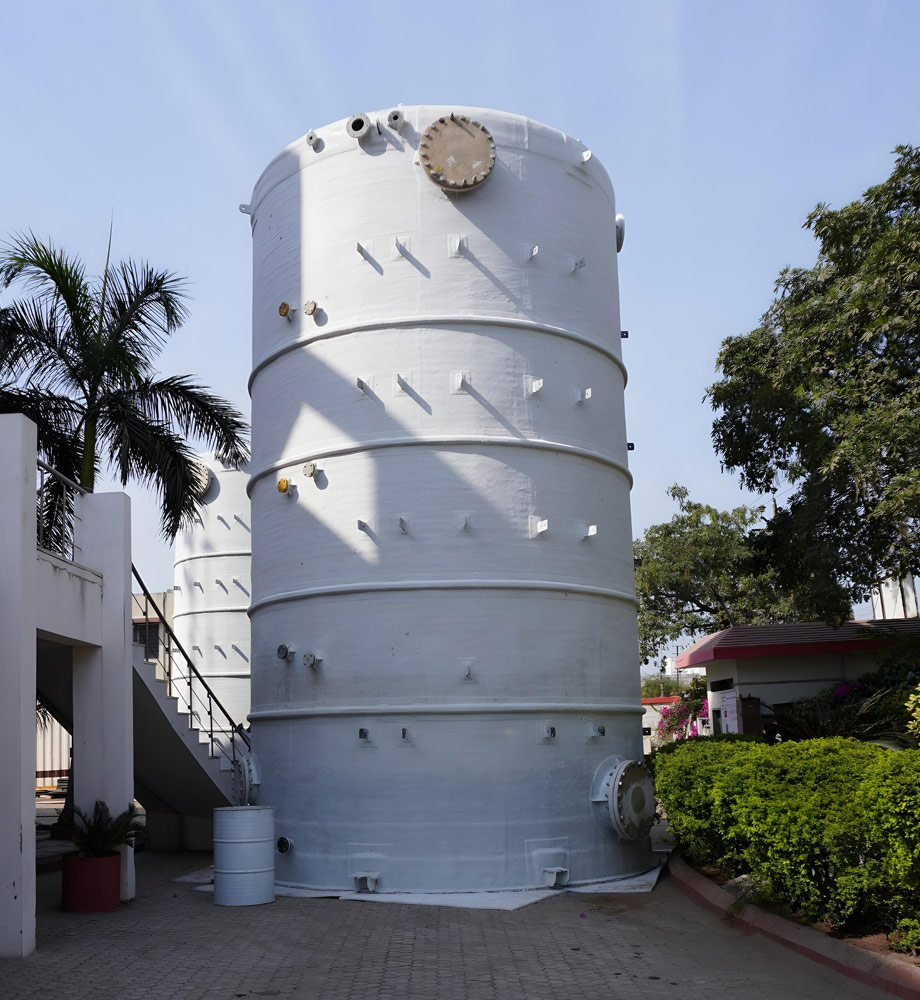Key Features
- Chemical Resistance: FRP walls tolerate a wide pH range, suitable for strong acids/alkalis
- Fire-Retardant & UV-Stable: Can be supplied with flame-retardant and UV-protective resins or coatings
- Pressure/Vacuum Rated: Designed to handle slight pressure or vacuum if needed
- Double-Wall Options: Available with secondary containment (double-walled) for extra safety
- Accessories: Ladders, platforms, level indicators, venting, and engineered supports
Benefits
- Long Service Life: FRP tanks outlast steel in corrosive service, withstanding decades without pitting or leaks
- Low Weight: Easier transport and installation compared to metal tanks
- Versatility: Custom shapes and sizes, from cylindrical to rectangular designs, to fit site constraints
- Leak-Proof: Seamless lamination prevents leaks; optional welded thermoplastic liners eliminate seepage
Applications
- Chemical Processing: Storage of acids (sulfuric, nitric, hydrochloric), alkalis (NaOH), solvents, bleaches
- Water/Wastewater: RO raw water tanks, wastewater equalization, effluent neutralization
- Food & Pharma: Corrosion-resistant tanks for food-grade storage (with FDA-approved resin)
- Industrial Utilities: Firewater tanks, coolant storage, potable water in remote sites
Technical Specifications
- Design Standards: BS 4994, ASME RTP-1, ASTM D3299, etc.
- Construction: Filament-wound FRP with polyester or vinyl-ester resin; optional PVC or PP liners
- Volume: 0.1–500 m³ (100 L to 500,000 L)
- Diameter: Up to approximately 6 meters factory-built; larger sizes constructed on-site
- End Closures: Dished, flat, conical, or open-top
- Operating Temperature: Typically –10 °C to 80 °C; higher possible with special resins
Unique Selling Points (USPs)
- Largest Tanks Built: Engineered the largest FRP storage tanks in India (e.g., 8 m×10 m, 500 m³)
- Underground Tanks: Certified single- or double-walled FRP tanks for underground fuel and chemical storage
- Turnkey Delivery: In-house design, shop fabrication, and on-site assembly with full QA/QC

